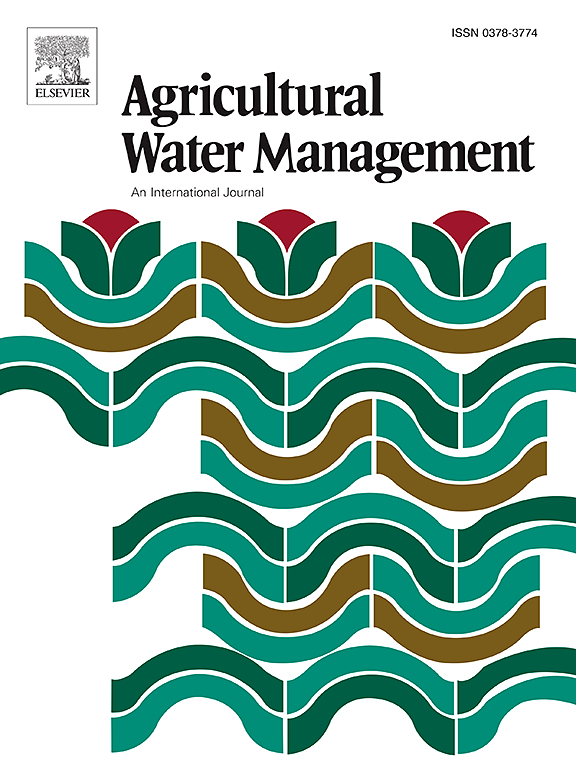智能栽培系统中优化的水资源管理可以减少温室气体排放和能源需求,同时确保水稻产量的可持续性
IF 6.5
1区 农林科学
Q1 AGRONOMY
引用次数: 0
摘要
同时提高水稻产量、减少温室气体排放和提高能源效率是可持续粮食生产的一项重大挑战。目前,华东地区正在积极推广智能水稻种植技术,包括智能精密旱作直播(IDS)、无人机播种(UAS)、智能机械移栽(IMT)等。目前缺乏对这些模式下的产量、温室气体排放和能源消耗的综合评估,从而限制了技术优化和推广决策。在这里,我们在2022-2023年进行了田间试验,系统地评价了这些种植模式。结果表明,IMT的平均产量最高(11.1 t ha-¹),超过IDS(10.5 t ha-¹)和UAS(10.2 t ha-¹),因为IMT的汇容量更大。与IMT相比,IDS使全球变暖潜势(GWP)和温室气体强度(GHGI)分别降低了53.7% %和50.3% %,与UAS相比,分别降低了22.0% %和23.2% %。这种减少主要源于甲烷(CH4)排放量的减少,尽管氧化亚氮(N₂O)排放量增加,这在很大程度上与微生物基因丰度的变化有关(例如,较低的mcrA/pmoA比率,较高的AOA-amoA和narG)。IDS还显示出出色的能源效率,与UAS和IMT相比,其能源利用效率分别提高了9.7 %和3.4 %,总能量输入为43,171.7,46,113.5和46,311.4 MJ ha−1。我们的研究结果表明,在显著减少温室气体排放和能源消耗的情况下,IDS可以在农村地区实现可接受的产量。本文章由计算机程序翻译,如有差异,请以英文原文为准。
Optimized water management in intelligent cultivation systems mitigates greenhouse gas emissions and energy demand while ensuring rice yield sustainability
Achieving simultaneous improvements in rice yield, reductions in greenhouse gas (GHG) emissions, and enhanced energy efficiency represents a critical challenge for sustainable food production. Currently, Eastern China is actively promoting intelligent rice cultivation technologies, including intelligent precision dry direct-seeding (IDS), unmanned aerial vehicle sowing (UAS), and intelligent mechanical transplanting (IMT). Comprehensive assessments of yield, GHG emissions, and energy consumption under these patterns are currently lacking, thereby limiting technological optimization and dissemination decisions. Here, we carried out field trials in 2022–2023 to systematically evaluate these cultivation patterns. The results showed that IMT achieved the highest mean yield (11.1 t ha-¹), exceeding IDS (10.5 t ha-¹) and UAS (10.2 t ha-¹) due to greater sink capacity. IDS reduced global warming potential (GWP) and greenhouse gas intensity (GHGI) by 53.7 % and 50.3 %, respectively, compared to IMT, and by 22.0 % and 23.2 % compared to UAS. This reduction stemmed primarily from lower methane (CH4) emissions, despite higher nitrous oxide (N₂O) emissions, which were largely associated with changes in microbial gene abundance (e.g., lower mcrA/pmoA ratio, higher AOA-amoA and narG ). IDS also demonstrated excellent energy efficiency, boosted energy use efficiency by 9.7 % and 3.4 % over UAS and IMT, respectively, with total energy input of 43,171.7, 46,113.5, and 46,311.4 MJ ha−1. Our results suggest that IDS can achieve acceptable yields in rural areas with significant reductions in greenhouse gas emissions and energy consumption.
求助全文
通过发布文献求助,成功后即可免费获取论文全文。
去求助
来源期刊

Agricultural Water Management
农林科学-农艺学
CiteScore
12.10
自引率
14.90%
发文量
648
审稿时长
4.9 months
期刊介绍:
Agricultural Water Management publishes papers of international significance relating to the science, economics, and policy of agricultural water management. In all cases, manuscripts must address implications and provide insight regarding agricultural water management.
 求助内容:
求助内容: 应助结果提醒方式:
应助结果提醒方式:


